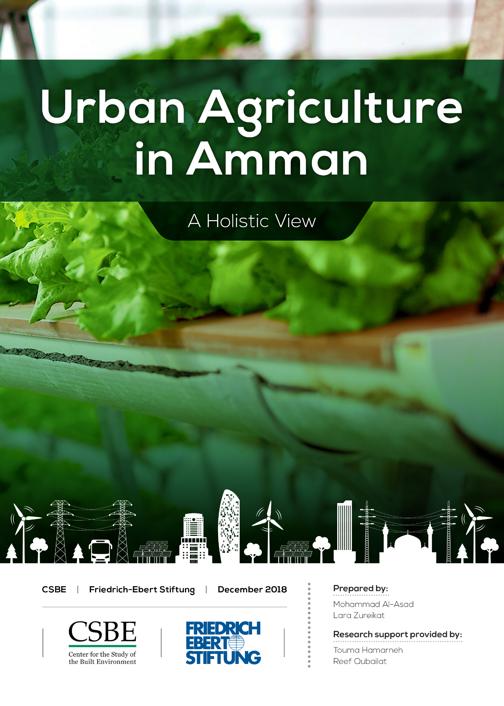Publikationen der StiftungUrban agriculture in Amman Titel
Titelaufnahme
- TitelUrban agriculture in Amman : a holistic view
- Verfasser
- Körperschaft
- Erschienen
- Umfang28 Seiten : Illustrationen
- AnmerkungLiteraturverzeichnis Seite 26-27
- SpracheEnglisch
- DokumenttypDruckschrift
- Schlagwörter (LOCAL)
- Schlagwörter
- Geografika
- ISBN978-9923-759-00-4
- URN
- Das Dokument ist frei verfügbar
- Nachweis
- Archiv
Urban agriculture was historically widely practiced in urban areas in Jordan and the Levant. The traditional plant palette included fruits such as citrus, figs, pomegranates, grapes, and stone fruits. Growing vegetables such as tomatoes, cucumbers, radishes, as well as herbs such as mint, parsley, and basil was also widely practiced. Changing attitudes towards gardens (from ones that primarily feature edible plants to ones that primarily feature ornamental plants) as well as increased urbanization and densification has resulted in a diminishing availability of available open space in the domestic and public realms that is available for urban agriculture. For a long period in the history of the city of Amman, with remnants of this still visible today, were old gardens with the traditional selection of fruiting trees, and empty plots farmed by tenant farmers with rain-fed crops such as wheat, barley, chickpeas, and fava beans. Urban agriculture in Jordan, however, has been quickly diminishing, and has unfortunately become an alien phenomenon for those under forty years of age, if not older. In contrast, urban agriculture has been a growing activity in various parts of the world. Increased awareness of the importance of health issues / organic food / clean living, of bringing greenery into the city, and of the reduction of emissions, as well as the development of new relevant technologies, are making it more feasible and welcome on the individual, institutional, and commercial levels. Urban agriculture not only serves to provide a source of fresh fruits and vegetables, but is in addition an activity that has a therapeutic value to its practitioners. It also helps create a level of positive social interaction as participants come together to form communities whose members exchange knowledge and experience, as well as the fruits and vegetables they grow. Urban agriculture also is a form of income generation and community development. In contrast to other income generation projects, such as craft making, which require intricate marketing and sales networks, in the case of urban agriculture, the participants would simply consume what they produce, but also have the options of bartering what they grow or selling it in the market. With urban agriculture, we are dealing with a historical and important form of food production that unfortunately has disappeared within the context of a country such as Jordan as a result of rapid urbanization and the mismanagement of open space. This study examines the current shy resurgence of urban agriculture in Amman, and also looks into a few examples outside the capital. It accordingly examines and documents case-studies and pilot projects, and includes the results of interviews conducted with various people who have been involved in this process. It also summarizes the benefits, challenges, successes, and failures of urban agriculture initiatives in Amman and Jordan. The study, in addition, recommends potential avenues for developing the field of urban agriculture in Jordan. It should be pointed out here that urban agriculture may be carried out on either the small-scale household level or the large-scale commercial level. As this study indicates, the two are very different activities, and the contrast between them in terms of scale and economics are substantial. Although this study addresses both levels, the primary emphasis is on the small-scale household level.
